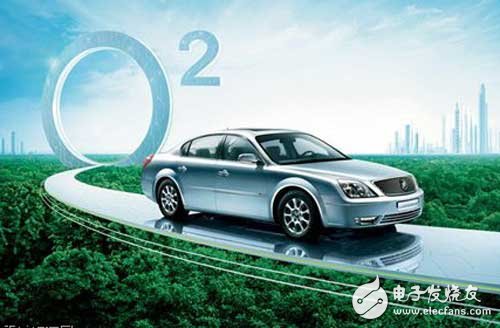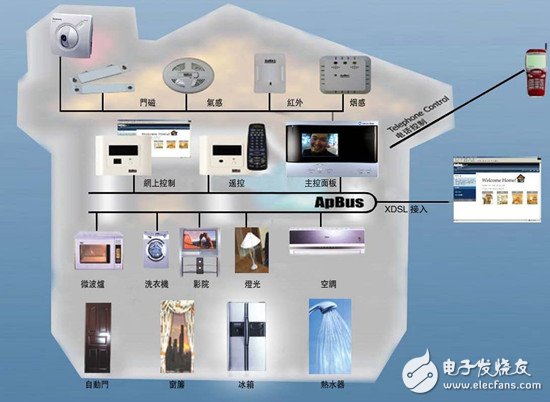In recent years, as the impact of disasters has deepened and the field has become more widespread, the problems of energy conservation and environmental protection have quickly entered the vision of the central decision-making level and have been elevated to the historical height of “building beautiful Chinaâ€.
In addition to energy conservation and environmental protection, smart devices are also the focus of this year. According to reports, at the 2013 Symposium/Itxpo Global Conference in Orlando, USA, a well-known foreign research institution proposed the top ten technologies and trends of strategic significance in 2014. Among them, the rise of intelligent robots and 3D printing technology are among the top ten.
In the context of smart devices and energy conservation and environmental protection, new energy vehicles, smart homes, smart wear, 3D printing, robots and other related industries have also become investment hotspots in the market in 2014.
(1) New energy vehicles
In the past year, the development of green energy and low carbon has been highlighted and strengthened in the State Council's "Opinions on Accelerating the Development of Energy Conservation and Environmental Protection Industry", the Third Plenary Session of the Party, and the Central Economic Work Conference. Many brokerage analysts have boldly predicted that as the relevant policies continue to advance, the flow of funds into the sub-sectors in 2014 will also accelerate the probability of surpassing other industry booms.
The hot sales of Tesla electric vehicles have a subversive impact on the entire automotive industry, and it is very likely to drive the transformation of the automotive industry and the energy industry. In addition, the Ministry of Finance learned that the Ministry of Finance, the Ministry of Science and Technology, the Ministry of Industry and Information Technology, and the National Development and Reform Commission recently issued the Notice on Further Promoting the Application and Application of New Energy Vehicles, and adjusted the subsidy standards for new energy vehicles. After the subsidy promotion policy expires, the central government will continue to implement the subsidy policy.

Many provinces use new energy vehicles as a weapon to prevent air pollution. It is reported that as of February 10, the government work reports of 31 provinces (municipalities and autonomous regions) have all been announced. Among them, 21 provinces indicated that they will focus on developing new energy industries this year, and 12 provinces will vigorously develop new energy vehicles.
From the perspective of the local two conferences, public transport will become an important area for new energy vehicles to show their talents. Guangdong Province proposed that it will promote the electrification of public transportation in cities with conditions. Liaoning Province will vigorously promote green transportation, and new urban buses and taxis will strive to adopt new energy vehicles. The industry believes that the development of new energy vehicles is an effective means to solve environmental pollution.
A few days ago, Premier Li Keqiang went to Xi'an to investigate BYD. Vice Premier Ma Kai went to Shenzhen, Hefei and Wuhu to investigate BYD, JAC and Chery. Industry insiders expect that the policy support for new energy vehicles will further increase in the future.
(2) Smart home
Google shocked the industry by acquiring NestLads, a smart home equipment maker, for $3.2 billion. And released a clear signal - smart home has become a big market for giants to compete.
Nest lets the industry see new ways to enter the home. It is aimed at "old" equipment such as thermostats and smoke detectors that have been around for many years, and Nest is designed with new methods. This "small and beautiful" idea of ​​making traditional equipment smarter is completely different from the systematic and integrated approach of "traditional and comprehensive" of traditional Chinese smart homes.

In fact, the concept of smart home life has been lurking in China for more than ten years, but it has not really raised a wave of sustainable development. With the popularity of the Internet and the mobile Internet, the smart home industry is welcoming the return to the spring window. Its development speed has exceeded expectations. The advent of the 4G era and the popularity of WiFi networks will become the "catalyst" for the development of smart homes. Some analysts predict that China's smart home market will reach 42 billion yuan in 2010. It is expected that the market growth rate will exceed 20% in 2010-2015, and it is expected to reach 138 billion yuan in 2015. In the field of home automation with hundreds of billions of dollars in the market, no big company will sit still.
Home appliance manufacturers, after being spurred by Internet companies frequently, have tried to use their "small and beautiful" ideas to activate their long-awaited smart home appliances dream. For example, Haier's "air box" is one of the test waters. This is defined as the "family information center" of small partners, and other air conditioners, purifiers and other appliances to form a network environment to achieve network linkage. The biggest names in the Internet technology industry, such as Baidu, Qihoo 360, Xiaomi, LeTV, etc., are also unwilling to miss the "entry" of this possible mobile Internet era.
In the face of the overwriting of Internet IT giants and traditional home appliance companies, how should the startup team choose? Is it to insist on own brand, or to hide in the shadow of the giant to survive? Is it to choose a gun to pick a line, to kill a bloody road with a product, or open data, hardware open source in order to quickly develop allies, create an ecological circle, or hand in hand to win the market scale? These are the choices that the startup team has to do.
(3) Smart wear
Just as the products in science fiction movies have entered reality, with the advent of Google Glass in 2012, smart wearable devices have become the new focus of the technology industry competition. People are waiting for Apple iWatch to play some new tricks. As a result, Chinese companies are preemptively making smart watches, smart bracelets and smart rings a reality. In June 2013, Shell Electronics released the world’s first true meaning. Smart watch GEAKWatch, smart ring with NFC as a selling point, so that information transmission and user inseparable; Baidu 咕咚 bracelet based on Baidu cloud technology development, to provide users with scientific data on sports health and sleep, and Samsung and Sony and other international brands until recently Enter the smart wear field.

According to the latest research report released by market research firm Canalys, the market for smart wearable devices will exceed 8 million units in 2014, and more Chinese companies will join the ranks of smart wearable devices. ZTE has already demonstrated its smart watch prototype at CES2014. Meizu, Huawei and HTC have also hinted that new smart wearable products will be launched soon, plus the rumored second-generation smart watch of the shell... no matter whether Apple iWatch can be released this year, China Companies have taken a place in the smart wear market.
Solar Panel Inverter,Solar Power Panel Inverter,Full Power Panel Inverter,Solar Panel Hybrid Inverter
GuangZhou HanFong New Energy Technology Co. , Ltd. , https://www.zjgzinverter.com
